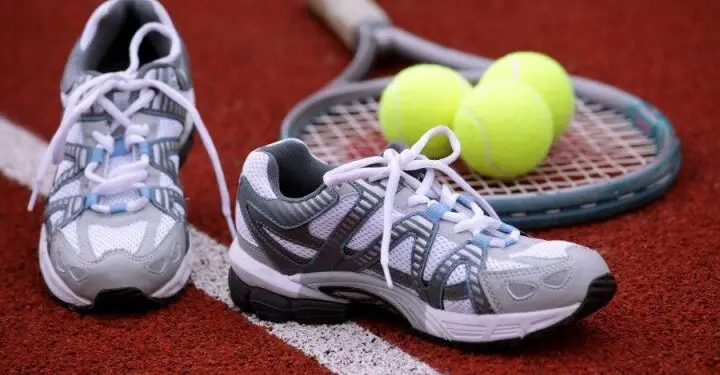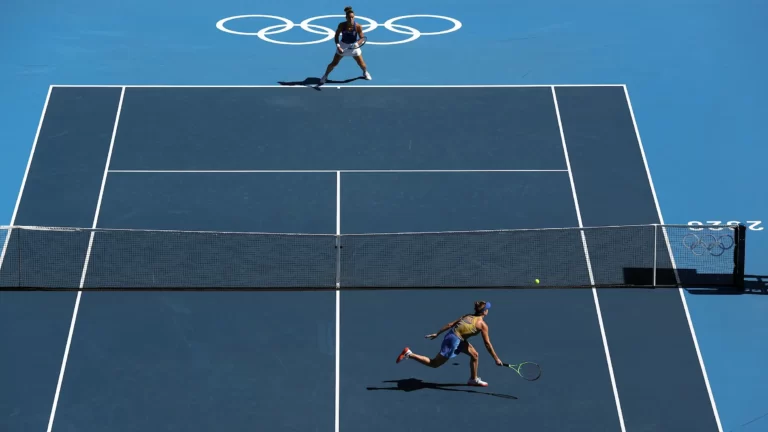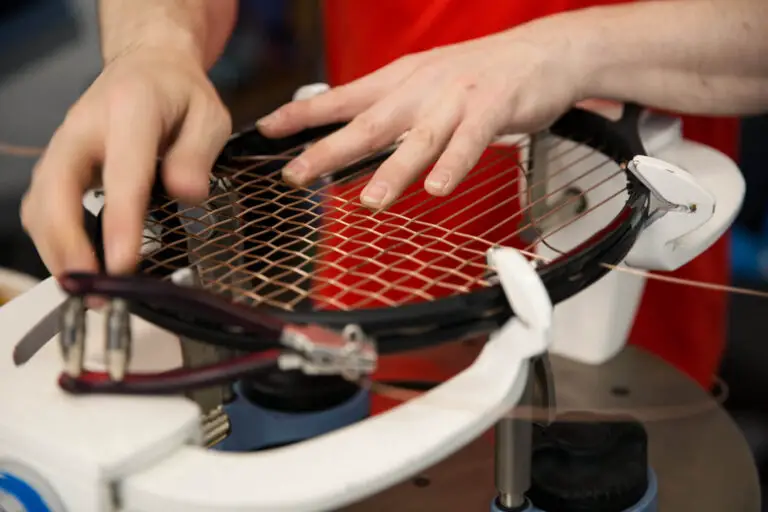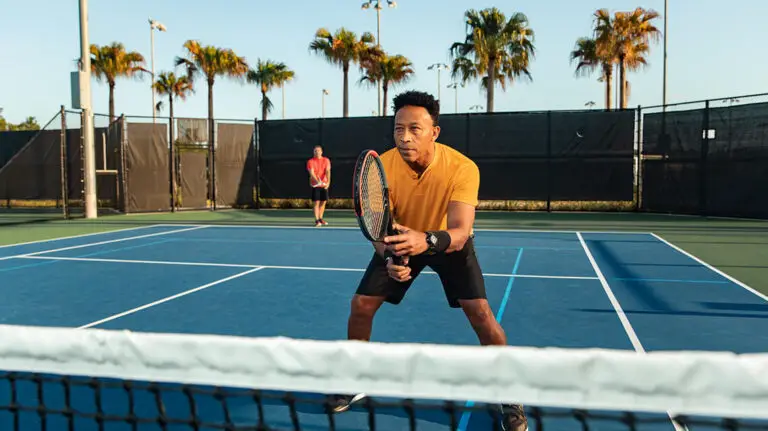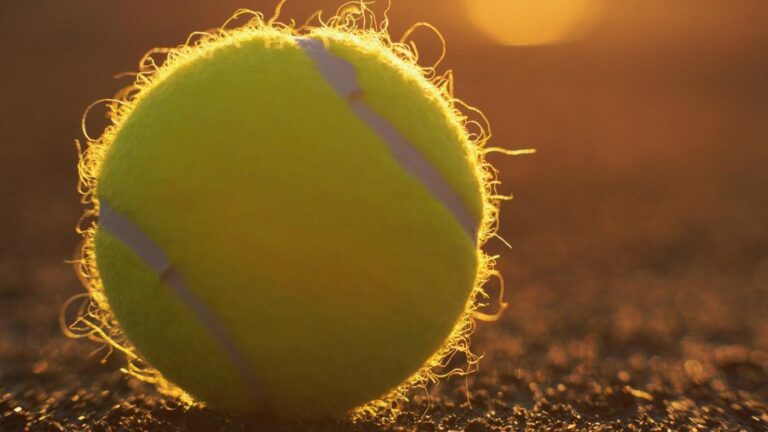Are Vans Tennis Shoes? ( Are They Good For Tennis? )
NO. Vans is a skateboarding footwear brand, and while this lends them a certain amount of decent traction for Tennis, it doesn’t make them the greatest to use.
Choosing the proper footwear is crucial to perform at your best and avoid injuries when playing tennis. Although many different shoe brands are available, it’s crucial to realize that not all shoes are appropriate for tennis. Vans is a well-known company for its skateboarding and casual footwear.

Although Vans offers a variety of fashionable and cozy shoe alternatives, it’s crucial to remember that they are not made expressly for tennis.
This article will discuss the value of wearing the right tennis shoes and Are Vans Considered As Tennis Shoes:
Are Vans Considered As Tennis Shoes?
Vans aren’t typically thought of as tennis shoes. Vans is a well-known footwear brand that produces both casual and skateboarding shoes. Although neither produced nor sold as tennis shoes, Vans shoes are frequently worn for skateboarding and casual wear.
Vans offers many shoe styles, including classic designs like the Authentic, SK8-Hi, Era, Old Skool, and Slip-On. These trainers are highly renowned for their distinctive design and popularity among skateboarders and fashionistas.
Look into companies specializing in sports footwear made for the sport if you’re looking for tennis shoes. These brands usually feature components necessary for Tennis’ specific movements and demands, such as high stability, traction, and cushioning.
What Qualities Should Good Tennis Shoes Have?

There are several characteristics to think about while selecting good tennis shoes. Here is a step-by-step explanation to assist you in comprehending the crucial details:
Step 1: Determine Your Playing Style and Court Surface
It’s crucial to consider your playing style and the type of court surface when choosing tennis shoes. Different playing styles, such as aggressive baseline play or serve-and-volley, to support your movements efficiently, call for distinct shoe qualities.
Different shoe performance and traction requirements apply to courts built of clay, grass, or hard surfaces.
For instance, shoes for clay courts must have high traction and the ability to slide, while footwear for hard courts needs to have stable, long-lasting outsoles.
Step 2: Focus on the Outsole
Tennis shoes’ outsoles are essential for delivering stability and traction during fast movements on the court. It is made to hold onto the court’s surface and avoid slipping.
Look for tennis shoes that have sturdy, non-marking outsoles that are made especially for the kind of court surface you usually play on. Depending on the court surface, various patterns and materials are employed to optimize grip and sliding capabilities.
Step 3: Consider Comfort and Fit
When it comes to tennis shoes, comfort is key. Uncomfortable shoes can lead to blisters, bruises, and even pain. Take into account the following elements to achieve maximum comfort:
Cushioning
Choose footwear with enough cushioning to help you stop quickly, move laterally, and leap without feeling the impact. The padding should be sensitive and supportive to prevent your feet from experiencing undue strain.
Proper Fit
Select a shoe size that leaves 13 millimeters or around half an inch between the tip of your big toe and the front of the shoe. In addition to preventing blisters and toe jams, this area also allows for adequate airflow to keep your feet dry and comfortable.
Before making a purchase, putting on a pair of shoes and taking a stroll are advised to evaluate the fit and comfort.
Step 4: Look for Stability and Support
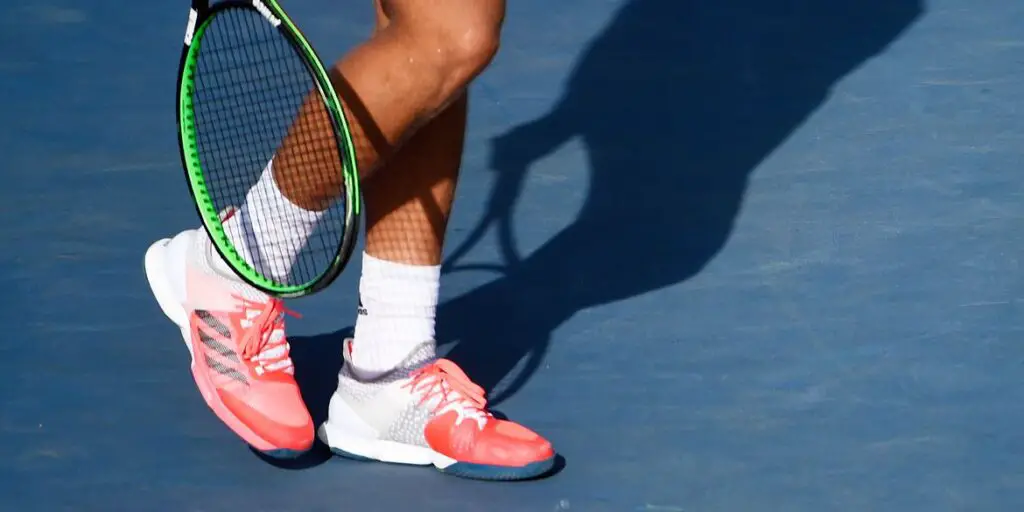
Tennis requires fast pivots, lateral movements, and a lot of direction changes. Thus, stability in tennis shoes is essential.
For stability during forceful movements and to prevent ankle rolling, look for shoes with adequate lateral support.
Shoes may have features like reinforced midsoles, bolstered heel counters, and safe lacing methods to provide general stability and support. A well-supported foot enables you to maneuver the court confidently and helps prevent injuries.
Step 5: Consider Durability and Weight
Because of the demands of the sport, tennis shoes experience tremendous wear and tear. Based on your playing frequency and intensity, consider the required level of durability. Shoes with outstanding stability and longevity are frequently a little heavier.
However, if speed and agility are your priority, you may opt for lighter-weight shoes that still offer a reasonable level of durability. Finding the right balance between durability and weight depends on your preferences and needs.
Step 6: Take Personal Preferences into Account
Personal preferences play a role in choosing tennis shoes. Factors such as aesthetics, color options, brand reputation, and specific features important to you can influence your decision.
Some individuals prioritize comfort above all else, while others may focus on style or prefer a brand known for its quality of tennis shoes. Considering your personal preferences ensures that you have functional tennis shoes and enjoy wearing them during your games.
Are Vans Even Considered Tennis Shoes?
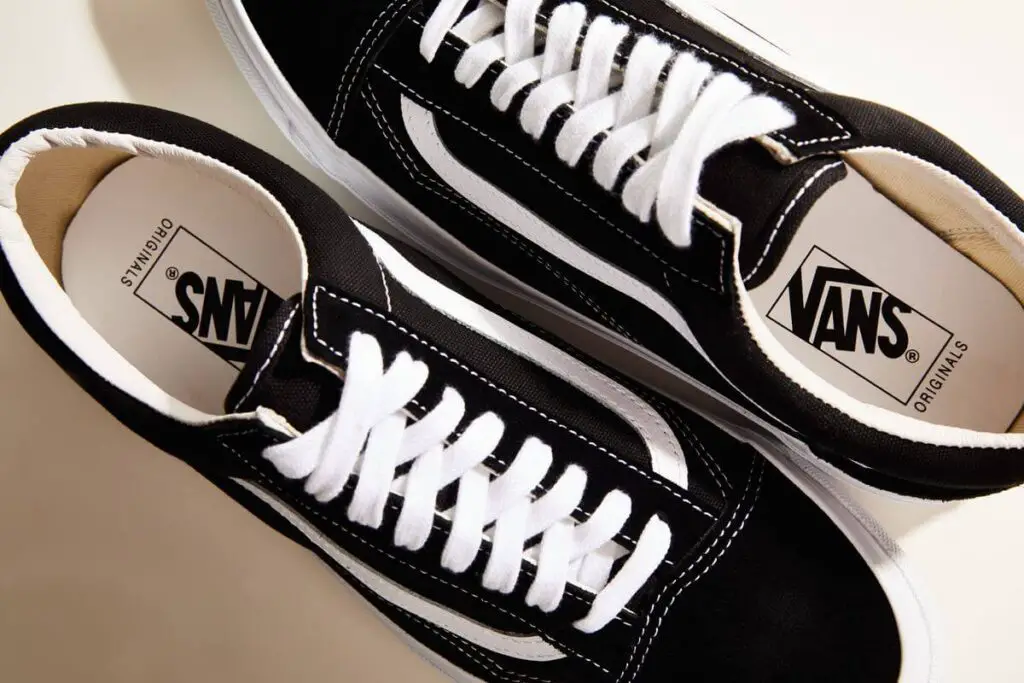
Vans is a popular footwear brand known for its skateboarding shoes, but it also offers a wide range of shoe styles suitable for various occasions. While Vans shoes are primarily associated with skateboarding, they are not traditionally considered tennis shoes.
Tennis shoes, also known as athletic or sports shoes, are designed specifically for playing Tennis or engaging in other sports activities.
They usually feature performance-enhancing features such as extra cushioning, lateral support, and durable outsoles optimized for tennis court surfaces.
Vans sneakers are sturdy and adaptable but not made with tennis play in mind. Vans’ shoe line includes designs including the Authentic, Old Skool, SK8-Hi, Era, and Slip-On, which are more frequently worn as lifestyle or casual footwear than for sports or athletic activities.
Different Shoes for Different Tennis Courts
For various court surfaces, different shoe kinds are advised for playing Tennis. Each surface’s grip, traction, and support will determine the best type of footwear to wear. The suggested footwear for hard, clay, and grass courts are shown below:
Grass-Court Shoes
It’s critical to wear the proper footwear to maximize performance on grass courts because they have a quick playing surface. In grass-court shoes, outs featuring “nubs” or “pimples” resembling studs are common.
Due to their strong grip, these nubs enable players to move rapidly without losing traction on the frequently slick grass. Shoes designed on grass courts should only be used on those surfaces.
Clay-Court Shoes
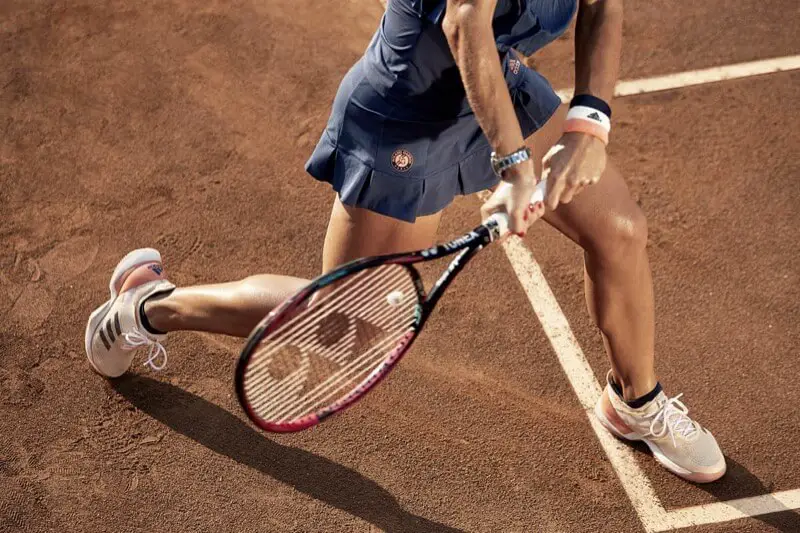
Since clay courts are slower than grass courts, wearing the proper footwear might help players adjust to the particular difficulties of this surface. Clay-court shoes include full herringbone (zigzag) tread patterns on the outsoles, which provide outstanding traction on the slick clay.
By preventing clay from settling into the outsole, this tread pattern improves grip during lateral movements, fast starts, stops, and direction changes.
Additionally, the knit upper of clay-court shoes is frequently tighter for stability and to keep the clay from getting inside the shoe. To get rid of any clay accumulation, it’s crucial to tap the side of the shoe with the racquet.
Hard-Court Shoes
Regarding bounce and speed, hard courts are viewed as a middle ground between clay and grass. Hard-court footwear has to mix comfort, toughness, and support. Usually, they have an outsole made to provide a grip on rough areas without harming the court.
The outsole pattern often has a diverse tread pattern that permits movement in multiple directions. Hard-court shoes should have enough lateral support and cushioning to handle the demands of hard-court play.
FAQs
Can I wear the same shoes on different tennis court surfaces?
Although wearing the same shoes on several court surfaces is possible, surface-specific footwear is usually advised. Every court surface is distinct and needs a different amount of support, traction, and grip. Performance can be improved, and injury risk can be reduced by wearing the proper shoes for each surface.
What happens if I wear the wrong shoes on a specific court surface?
On a particular court surface, improper shoes can limit traction, compromise stability, and increase the chance of slips and fall. For instance, putting grass court shoes on a hard court may cause excessive slippage and less control, while wearing hard court shoes on clay may result in insufficient grip.
Can I wear clay-court shoes on other surfaces besides clay?
Clay-court shoes were created for the particular needs of clay courts, such as the requirement for higher traction and the capacity to discharge clay from the outsole.
Clay-court shoes can be worn on different surfaces, like hard courts, but their performance may be diminished, and the loose clay particles may shorten the shoes’ lifespan.
How often should I replace my tennis shoes?
Several variables influence tennis shoe durability, including usage frequency, court surface, player weight, and playing style. Tennis shoes can be used for 45 to 60 hours on average. But it’s important to check on the shoe’s condition constantly.
It might be time to get new shoes if the outsole is damaged, the cushioning has degraded, or there are indications of instability or discomfort.
Can I use running or cross-training shoes for Tennis?
Tennis requires lateral movements, fast stops, and direction changes that cannot be performed in running or cross-training shoes. They might not have the lateral support, traction, or durability required for movements particular to Tennis. Tennis shoes that offer the right features and support for the demands of the sport are advised.
How do I choose the right size for tennis shoes?
Tennis shoes must be fitted properly, which is essential. They should fit snugly without being uncomfortably tight or loose.
For precise advice, measure the size of your feet and refer to the manufacturer’s sizing charts. It’s also a good idea to try on shoes in person to assess things like toe room, arch support, and general comfort.
Conclusion
Vans is more famous for its casual and skateboarding shoes than tennis shoes. Tennis players are advised to select shoes made expressly for the game, considering the required qualities like traction, support, and durability. Vans may offer stylish and comfy shoe options but might not have the unique performance qualities needed for the best tennis game.
REFERENCES
- https://www.atptour.com/en/news/tennis-warehouse-gear-guide-june-2017
- https://www.asics.com/gb/en-gb/tennis-advice/guide-to-tennis-shoes/
- https://www.tennis-warehouse.com/learning_center/buyingguides/shoesbuyingguide.html
- https://tenniscompanion.org/best-tennis-shoes/
- https://www.mouratoglou.com/en/coaching-corner/equipment-play-tennis/choose-tennis-shoes/
related Posts
How Long Does It Take To Restring A Tennis Racket?
Why Are Tennis Balls Sealed? ( The Key Reasons )

